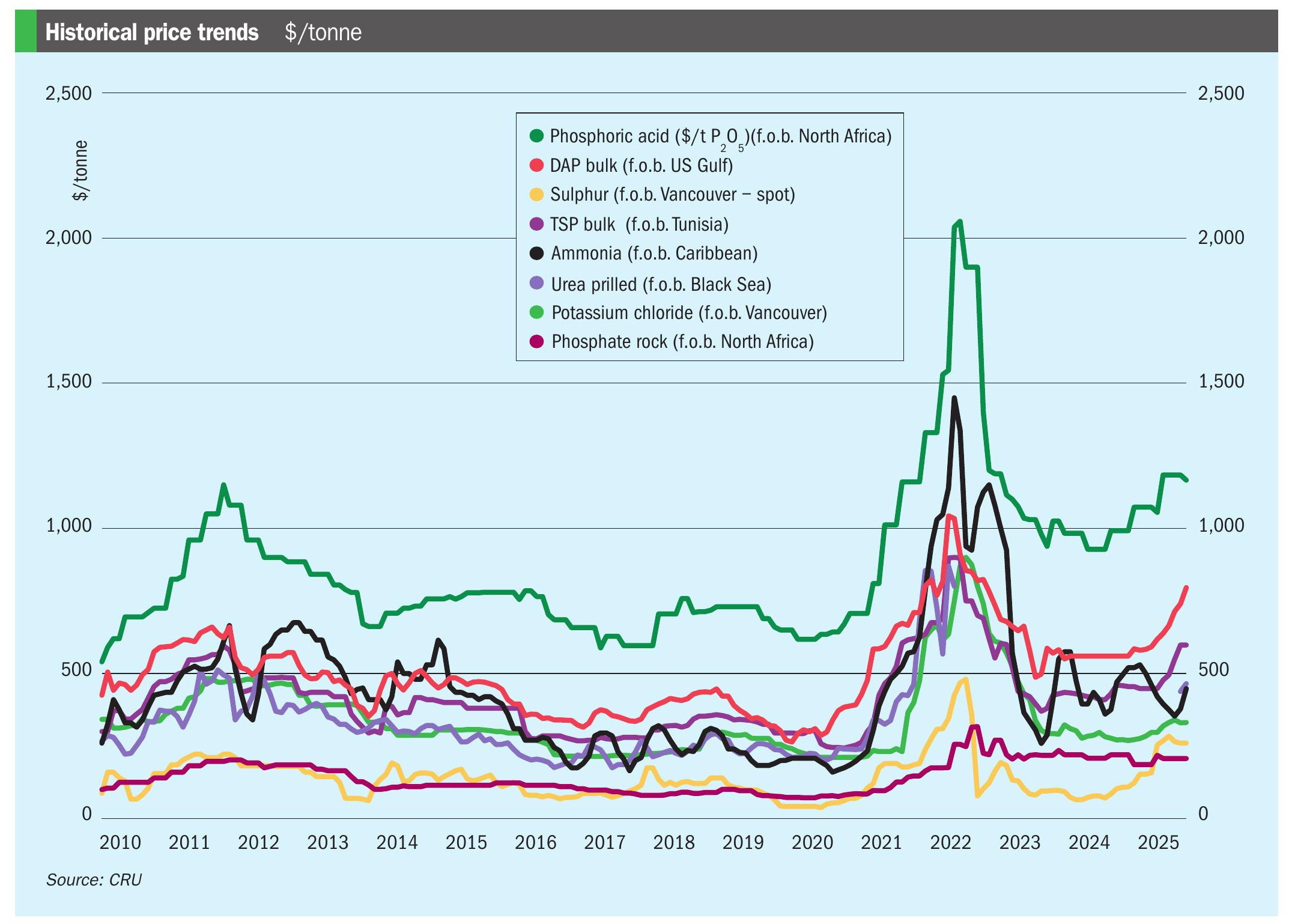Nitrogen+Syngas 390 Jul-Aug 2024

31 July 2024
Price Trends
The Middle East still awaits the return of one of Ma’aden’s ammonia units which is down for a turnaround but a reduction in price in the region suggests the supply position is easing from recent tightness. PIC sold a parcel to the Far East at $330/t f.o.b. following recent sales as high as $360/t f.o.b.
Indonesia still appears to be without spot tonnes and traders believe little will emerge in July. Malaysia also has little to offer and is focused on term deliveries. The market was expecting the Tampa price to emerge at time of writing, and some anticipated a rollover from the $400/t f.o.b. agreed for June. The more bearish participants however point to the weaker domestic market in the US and in particular the aggressive fill program announced 20 June by Koch.
Trinidad saw natural gas curtailments of at least 37% from the beginning of June, with the impact on ammonia production set to vary by supplier. Yara’s Tringen I plant was reported to be fully offline during the gas curtailment period, with the Tringen II unit also shutting down briefly due to a power outage. Trinidad exported 290,000 t of ammonia in May, up from 260,000 tonnes in April. Caribbean export prices were pegged at around $360/t f.o.b.

The urea market seems to be looking for a catalyst to hold current f.o.b. levels or to push the market higher. There is a definite air of softness in the market as buyers generally sit on the sidelines. Much of the speculation has centred around Egypt, which shut down several plants during June due to gas supply curtailments. Supply was restored towards the end of the month, and most plants returned to production. With about 200,000 tonnes of exports estimated by some traders to be fulfilled from earlier sales, producers in Egypt may not be pressurised to enter the export market until July. This may have triggered one producer to offer tonnes as high as $365/t f.o.b. Traders were apparently selling top-off tonnes for vessels already scheduled into Europe at $350-355/t f.o.b. netback.
Brazil has seen slightly lower levels with sales reported at $360-$370/t c.fr but numbers as low as $350/t c.fr reflect just buyer bids. There is however said to be a heavy line up of unsold tonnes. Argentina traded up to $390-395/t c.fr, but buyer interest has now faded and some traders believe numbers may have to fall to $375/t c.fr to secure fresh interest. Mexico remains on the sidelines waiting for rain and some readjustment in the price.
India’s urea sales climbed 10% in May to 2.13 million tonnes. Production declined 3% to 2.57 million tonnes and urea imports fell 18% to 344,000 tonnes.
END OF MONTH SPOT PRICES
natural gas

ammonia

urea

diammonium phosphate







